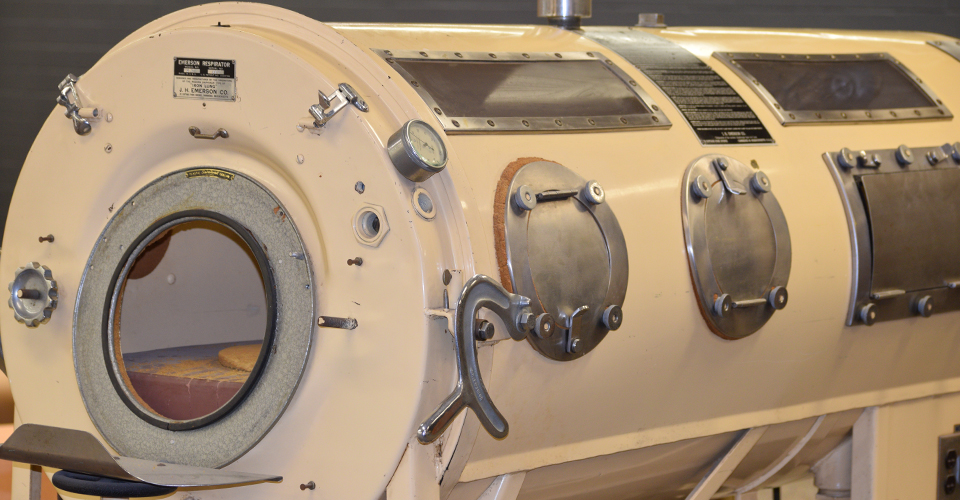If you venture to the back corner of the Aneal Mohan Kohli Academic and Information Technology Center (Kohli Center), chances are you won’t miss what one student referred to as “that metallic monstrosity” — the iron lung.
While it is unknown how long NEOMED has been the owner of a negative pressure ventilator, better known as an iron lung, the retired respirator always attracts attention during tours through the Kohli Center. When I ask visiting students if they know what it is, the responses are wonderfully illustrative of how far we have come in the fight against many diseases, but especially polio.
Many Baby Boomers and Gen Xers instantly recognize the device and understand its intended use. Younger people often don’t. They guess anything from a hyperbaric machine to a CAT scan machine, or, perhaps, an X-ray machine — the medical instruments they are most familiar with. I’m thankful that they don’t know the answer, since that means polio is much less common now.
In polio, the diaphragm muscles are paralyzed. Iron lungs were (and, in rare instances, still are) used to help polio patients breathe. The device at NEOMED, manufactured by the J.H. Emerson Company, used negative pressure to lift the rib cage and fill patients’ lungs with air. Iron lungs ran on electricity, but could be manually operated as well, just in case the electricity went out.
Our iron lung is in decent shape, despite the deteriorating sponge rubber collars at the respirator’s neck and around the portals through where patient care was delivered. The rubber collars help maintain the correct pressure within the unit and were much more flexible when the unit was actively being used.
Amazingly, there are individuals still living in iron lungs!
On a related note, one of our own, NEOMED alumnus Raymond Onders, M.D. (‘88), has been instrumental in the development of a Diaphragm Pacing System (DPS) which is designed to help patients move from mechanical ventilation to breathing more naturally on their own. This is accomplished by electrically stimulating the diaphragm. In the most successful cases, using this device allows patients to be weaned from mechanical ventilation and enjoy a better quality of life.
If you would like to learn more about living in an iron lung, check out this article from Dallas News.
If you would like to learn more about our iron lung, stop by the Kohli Center. We’ll be happy to show you around!
– Denise Cardon, access services and library manager, contributed this article.
